Our Cultures and Traditions are Intertwined with Migratory Birds
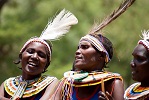  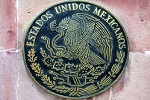 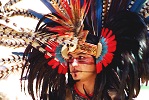
Throughout history, people have documented their interest in birds and their symbolic value. And even though migratory birds are only in any one place for a limited amount of time during the year, they play an important role in our lives. We have placed birds on our stamps, money and national flags and many countries' national animal is a bird. Birds appear in logos, brand names and product labels so they have a prominent place in our lives.
In many cultures, the movement, appearance or disappearance of migratory birds is an indication of seasonal change. For example, in Europe migratory birds are the "spring bringers" because their return to Europe corresponds to the return of spring as well. Weather forecasts can even be made through the careful observation of migratory birds and their behaviour.
Mythology and Religion
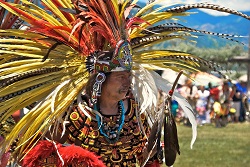
In certain cultures, birds have a high symbolic and spiritual significance. Feathered war bonnets used to be the most famous headdresses of Native Americans. Further, the King of Swaziland and traditional Masai men wear turaco feathers as a show of strength. Even today, the carnival costumes of Brazil and fashions seen on the catwalks of Paris are adorned with feathers.
Animals were used in Ancient Egyptian religious art to illustrate characteristics of the gods. Horus was depicted with the head of a falcon because he was believed to have the mythical strengths and qualities of a bird of prey. In Greek Mythology, a giant golden eagle served Zeus, the father of Gods as a personal messenger and animal companion. According to the Old Testament, Noah sent out a dove to see if the waters had receded after the flood. Today the dove is still seen as a symbol for hope and peace.
Art and Literature
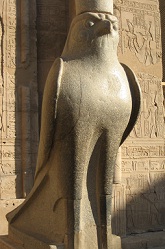 Birds are a major source of inspiration for people and especially popular among artists. They are illustrated in countless paintings and are subject of poems and music. Picasso's famous drawing of a dove is now recognized worldwide as a symbol of peace. Birds are almost magical to human beings and are depicted in art because of their beauty, songs, brilliant colours and their ability to fly around the globe.
Fairy tales and sailors' stories often describe birds as both good and bad omens. In many parts of the world the owl is synonymous with wisdom and knowledge, but it is also a symbol of death and darkness. According to an ancient Northern European legend, storks deliver babies. This story became popular due to the story "The Storks" by Hans Christian Andersen, the famous Danish fairytale writer.
In Asia, cranes are a symbol of long life and even immortality. People perform crane dances and fold the well-known origami paper crane. According to a Japanese legend, you will be granted a wish if you fold one thousand paper cranes. After the tsunami and nuclear crisis hit Japan in 2011, US American schoolgirls sent 1,000 origami cranes as a sign of hope and recovery to the disaster-ravaged regions.
Well known writers and artists created famous works that are related to birds. A famous poem of the Chinese Tang Dynasty praises the singing of the birds. The song of the nightingale became immortal in Romeo and Juliet by William Shakespeare. "The Wonderful Adventures of Nils" by Swedish author Selma Lagerlöf tells the story of an enchanted boy, Nils Holgersson and his fantastic journey on the back of a migratory goose. The Chilean poet Pablo Neruda had great admiration for birds and reflects on this passion in his book "The Art of Birds", using avian symbolism and metaphor to describe freedom and love.
Music and Dance

In many ancient societies across the world, people were inspired by the elegant movement of birds to perform bird dances. In such dances, the deep symbolic importance of birds to cultures is expressed, and it becomes clear birds have been a source of mystery and curiosity throughout human history. Black-crowned cranes are monogamous and perform regular dance rituals to reinforce their mutual bonds. Through dance, people express their fascination with birds and their behaviour and birds' courtship dances are often used in many ceremonies around the world.
The Native American Yuman Indians perform the Kumeyaay bird dance to celebrate their annual traditional gathering in California. In Australia, aboriginal dances often imitate animals including many birds.
Composers such as Beethoven, Liszt, Vivaldi and Bartok were inspired by birds to compose music, and many dances try to emulate the beauty of birdsong. Some pieces are even named after birds and Tchaikovsky's Swan Lake is perhaps the best known example.
Birds in art reveal the special and emotional connection between humans and birds. In the folklore of the Amazon Forest, the Uirapuru (Cyphorhirius arada) is known to have one of the most beautiful birdsongs, causing all other birds to stop singing themselves to listen. Reminiscent of a piccolo, flute or clarinet, the song of the Uirapuru inspired the Brazilian composer Villa-Lobos in 1917 to create the symphonic poem named in honour of the species. In the legend on which the orchestral piece is based, a handsome youth who enraptures the women with gentle song is transmuted into an enchanted invisible bird after being pierced through the heart by the arrow of a rival. The Uirapuru is also considered an amulet intended to provide happiness in business and love.
National Emblems
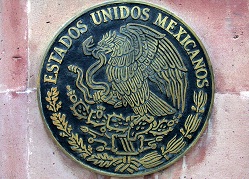
Many countries selected birds as their national emblem. Armenia, Austria, Egypt, Germany, Mexico, Panama, the Russian Federation, Serbia and the United States of America all chose an eagle species to represent their nations. The majestic Andean Condor is a national symbol of Bolivia, Chile, Colombia and Ecuador and plays an important role in the folklore and mythology of the Andean regions. With its huge wingspan, it is the largest land bird. This bird has been represented in Andean art from c.2500 BC onward, and is part of indigenous Andean religions.
In regional mythology, the Andean Condor was associated with the sun deity and believed to be the ruler of the upper world. The Andean Condor is considered a symbol of power and health in many Andean cultures, and it was believed that the bones and organs of the Andean Condor possessed medicinal powers, sometimes leading to condors being hunted and killed. The famous song "El Condor Pasa" (the Flight of the Condor) is also a typical Inca dance, based on authentic folk melodies.
|


